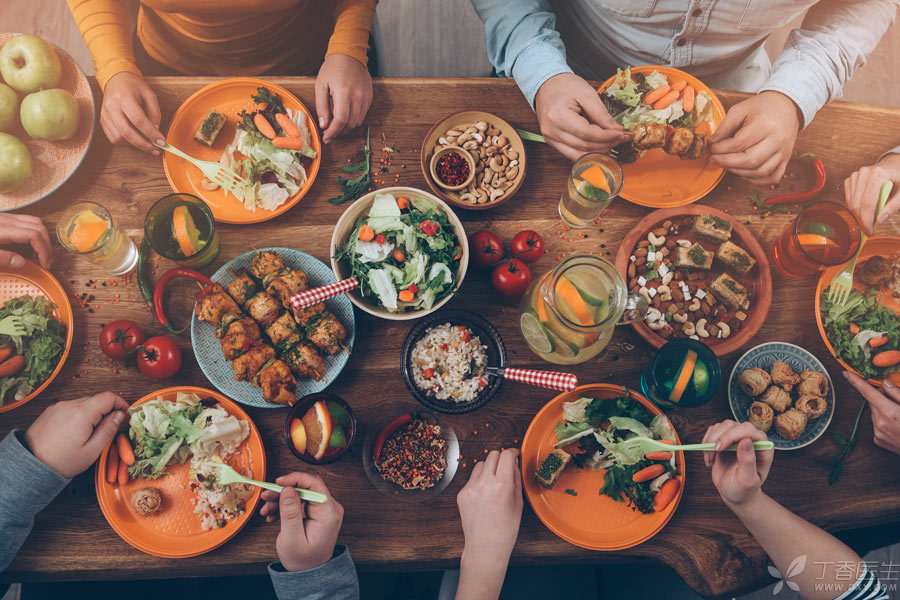
You can recall that when you eat yourself, what about eating what first?
Don’t underestimate the eating order of eating what first and then what, which can affect postprandial blood sugar.
The reason is what? Come and have a look with Dr. Clove!
Is your eating habit how’s?
We often see that some middle-aged and old friends have the following eating habits:
When eating, eat two meals first, then eat one mouthful of rice and one mouthful of vegetable plot.
Or, eat dry first, then drink thin. Eat steamed bread or cake first, then drink porridge; Or eat rice first, stir-fry, then drink soup. Snacks such as fruits and peanuts and melon seeds are eaten after meals.
This kind of eating habit can help us eat enough calories. However, it is reasonable to eat rice with more starch first. Because starch supplies energy quickly, it consumes less energy for digestion and absorption than protein, and it can also [save protein]. In difficult times when fish, eggs and milk are scarce, this is of course reasonable.
However, in the present situation, such [economical] eating habits can no longer adapt to the current changes.
Nowadays, most people have very little physical activity, There are many people who are overweight, obese, hyperlipidemic and hyperglycemic. This kind of people do not lack protein and fat, but they still like all kinds of finely processed starch foods, and stick to the principle that staple food is more important than dishes. White rice, white steamed bread, flower rolls and pancakes, fried flour rice noodles, all have a large number of fans.
Even with paunchy stomachs, it is difficult to change habits. However, it is also very difficult for these people to restrain their exuberant appetite and eat less at each meal-people are always weak-willed in front of their habits and instincts.
So, is there any way to control food intake and postprandial blood sugar without challenging willpower?
Yes! The method is to change the diet order and food proportion.

Small Changes Can Control Blood Glucose
The results of many studies show that excessive [light] diet, eating only a little staple food, fish, eggs, milk, nuts and oilseeds, is not conducive to blood sugar control.
Some studies have found that Before eating, if you can eat food rich in protein or drink one or two tablespoons of olive oil and other oils, you can reduce the postprandial blood sugar reaction. This eating method can reduce the gastric emptying speed by increasing some hormones related to appetite and blood sugar reaction, thus reducing the digestion and absorption speed of food and delaying the rise rate of blood sugar after meal.
Other studies have found that when protein-rich foods such as milk, bean products and meat are completely mixed with staple foods, the postprandial blood sugar response will also decrease. Milk, in particular, can increase the amount of insulin secreted after meals, thus reducing the blood sugar response.
There are also studies on the combination of staple foods such as white bread, which raise blood sugar very fast, and nuts such as almond, which can effectively reduce postprandial blood sugar reaction. This may be related to the high dietary fiber content, high fat and protein content, and especially slow digestion speed of nut foods.
Therefore, eating staple food together with protein-rich foods is a good way to stabilize blood sugar.
A large Japanese study on the relationship between eating order and blood sugar is the most classic. In this study, researchers asked diabetic volunteers to eat a plate of vegetables first, then other dishes, and finally the dishes were accompanied by rice.
Tracking and measuring their blood sugar levels at each time point from before the meal to 4 hours after the meal, comparing the way of eating food first and then food with food, the way of eating rice first and then food with food, and the way of eating food first can greatly reduce the peak blood sugar after the meal.
Later, the researchers asked more than 200 diabetics to eat according to this plan. As a result, the blood sugar fluctuation of the patients decreased significantly in two and a half years. In other words, the peak value of blood sugar decreased, but the valley value of especially low blood sugar increased, and the blood sugar change remained relatively flat during the day.
This proves that eating food first and then eating is conducive to the stability of blood sugar.
Control blood sugar, do this
Therefore, a simple blood sugar control scheme can be obtained:
The staple food is eaten together with food rich in protein, eating vegetables first and then eating. The specific implementation method is as follows:
- First, drink a large glass of water 20 to 30 minutes before the meal, or eat a tomato first. Second, eat a bowl of boiled vegetables, preferably green leafy vegetables steamed for two or three minutes with a small amount of oil and water. Then, bring other dishes to the front, push rice steamed bread to the distance, take a large mouthful of the dish, and then go with a small mouthful of rice.
The content of the dish is also very important. Vegetables must include three aspects: dark vegetables, light vegetables, bacteria and algae, plus a protein-rich food, such as tofu, fish and shrimp, lean meat, etc.
Let’s give a specific example:
Before eating, eat a tomato first. Then eat a bowl of pakchoi cooked with half a tablespoon sesame oil, which contains 200g of pakchoi and half a bowl of water.
Then we will officially start eating. One mouthful of green pepper and mushroom fried shredded bean curd, one mouthful of stewed wax gourd, and one mouthful of rice.
The advantages of eating like this are: protein is guaranteed, the number of vegetables is greatly increased, dietary fiber is especially sufficient, the stomach feels very full, you can’t eat more staple food, and you don’t feel hungry at all before the next meal-naturally there is no need to deliberately control your appetite.
In fact, not only should blood sugar be controlled, but all people with fatty liver, hyperlipidemia and obesity may as well change their eating order and give it a try, and the results will be quite different.
If you can add regular exercise, you can easily lose weight slowly!
